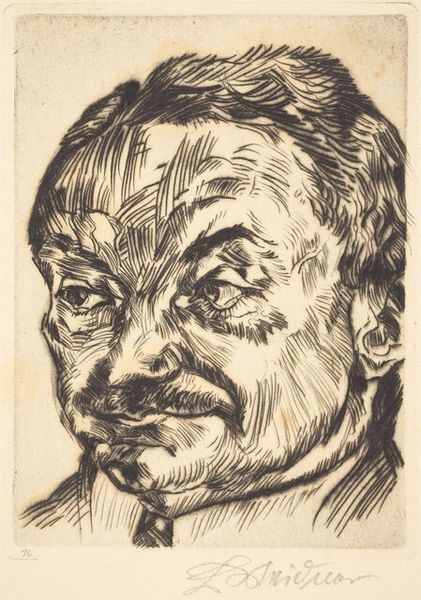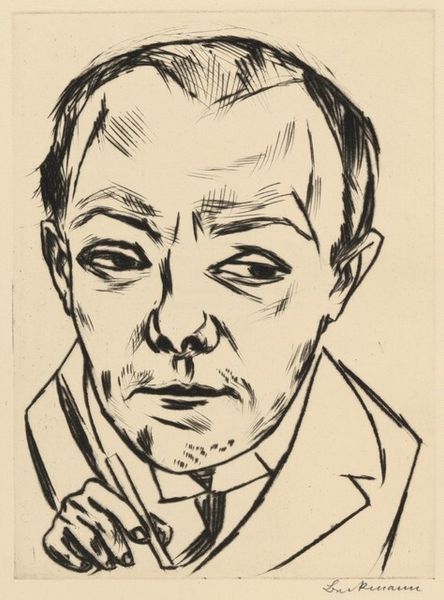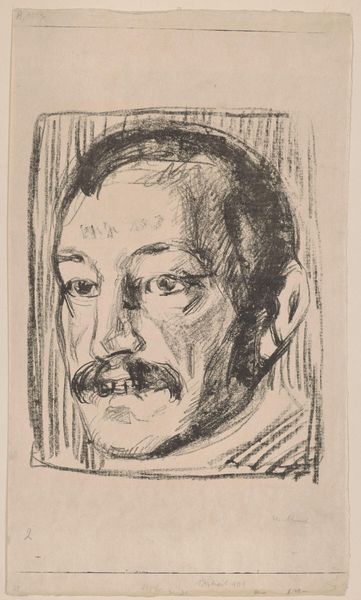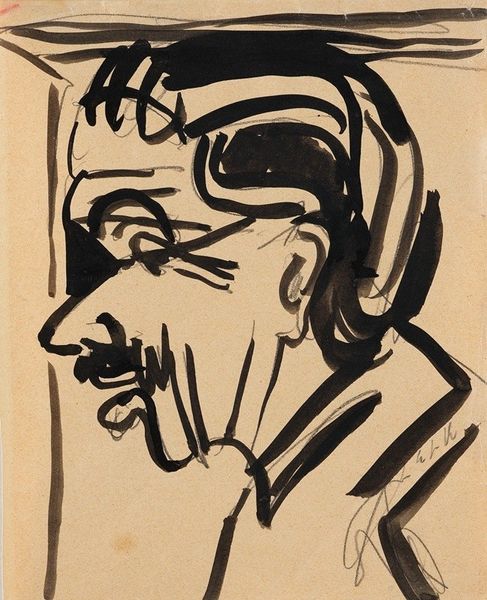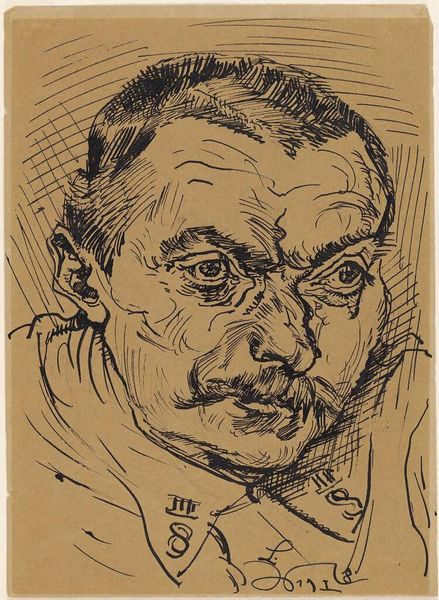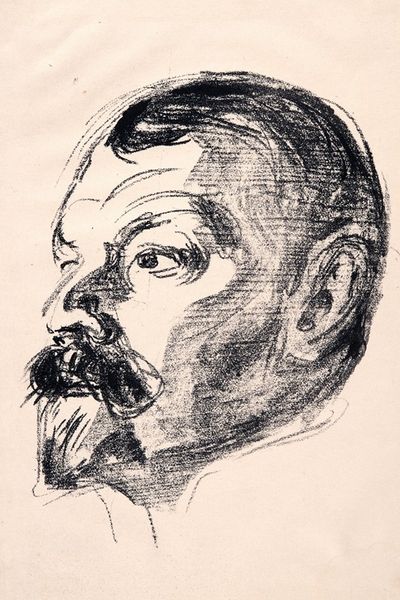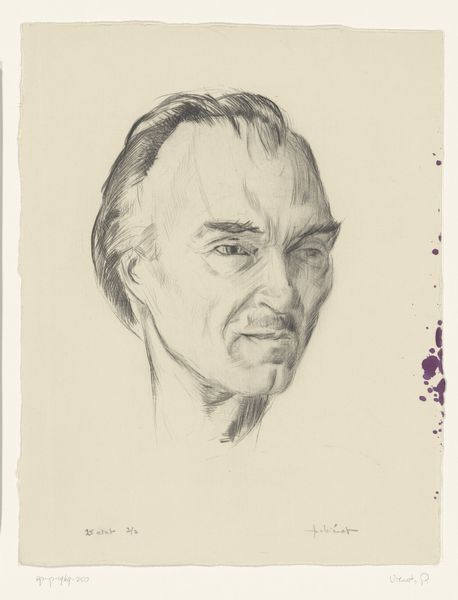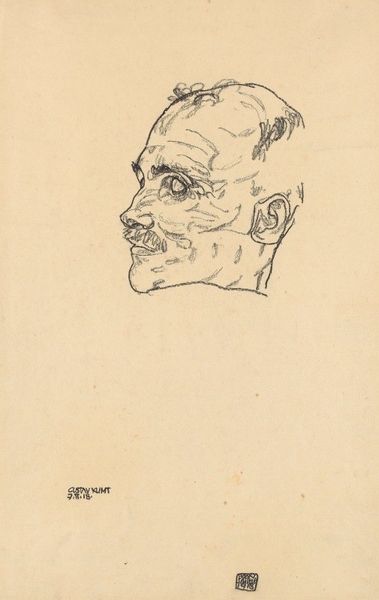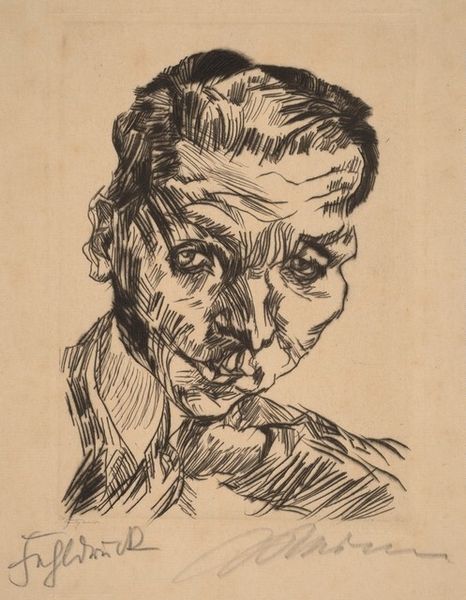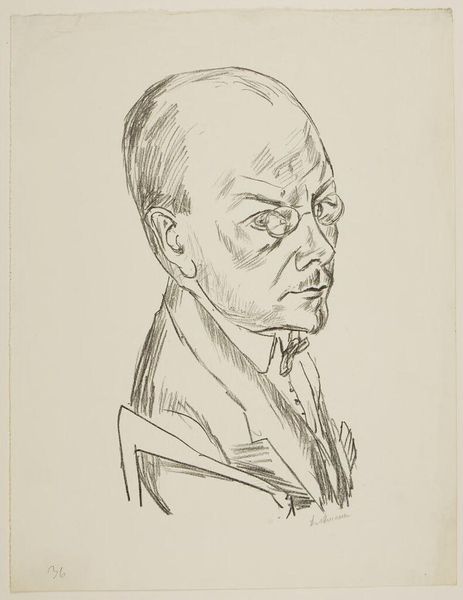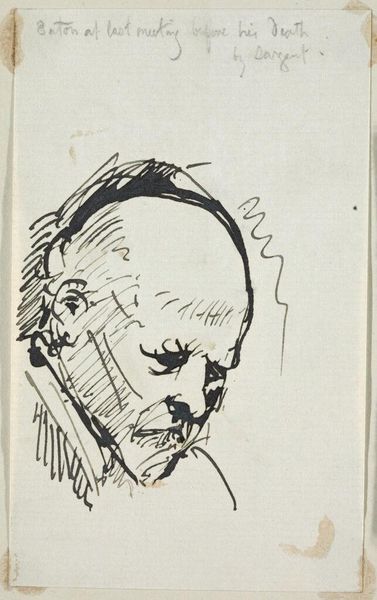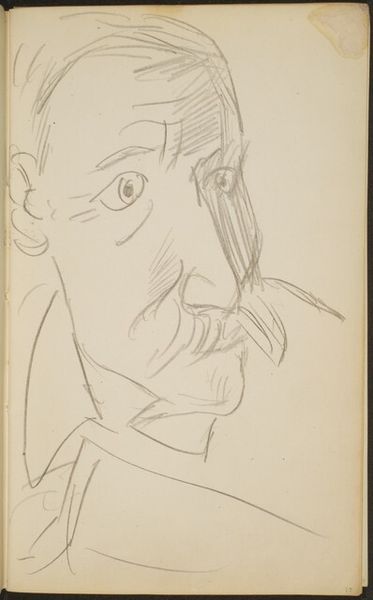
drawing, print, ink
#
portrait
#
drawing
#
ink drawing
# print
#
caricature
#
caricature
#
german-expressionism
#
ink
#
expressionism
#
portrait drawing
Copyright: National Gallery of Art: CC0 1.0
Curator: Here we have Ludwig Meidner's "Bildnis," which translates to "Portrait," a print executed in ink, possibly around 1920. What are your initial thoughts? Editor: There's a distinct sense of unease in this man's expression, almost as if he is wrestling with something internal, something societal. It feels very Expressionistic. Curator: Absolutely, the energy is palpable. The lines, rendered in stark black ink, showcase Meidner's confident, almost frantic application of materials to evoke such a dynamic image, don’t you think? Editor: The subject’s identity is important too; it would shed more light to consider how this work either subverts or reproduces existing visual power structures of its time through caricature and exaggeration, wouldn’t you say? The style is in dialogue with a broader political context. Curator: Well, in looking at the process itself, one notes the visible hand of the artist, the frenetic energy transferred directly from mind to paper through ink, isn’t it? The printing medium would have democratized access, making this commentary available to a wider audience during a time of massive socio-political shifts. Editor: The mass reproduction of Expressionist images, like this caricature, provided not only accessible critiques of power structures and class divisions, but also enabled the rapid dissemination of radical ideologies regarding humanity and society during a turbulent time period. This artwork isn't just ink on paper; it is an important, accessible marker within early 20th-century anxieties. Curator: So, for you, the true value of Meidner's portrait is less in its formal qualities, and more how it participated in a broader socio-political dialogue and the materiality of its accessible production. Fascinating! Editor: Precisely! The essence of its expression relies on both the hand that made it, the social circumstances surrounding that creation and, more importantly, who had access to it at the time and how they used its message in practice. Curator: Well, considering the dynamic technique and accessible medium of the piece I found that conversation most illuminating! Editor: Yes! The fusion of artistic action with an appeal for social action, both on the stage, if you will! I really value the socio-historical aspects and how it invites discourse.
Comments
No comments
Be the first to comment and join the conversation on the ultimate creative platform.
